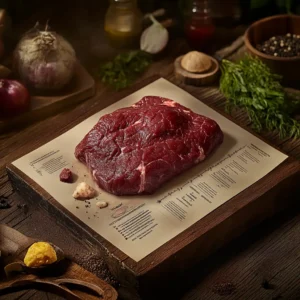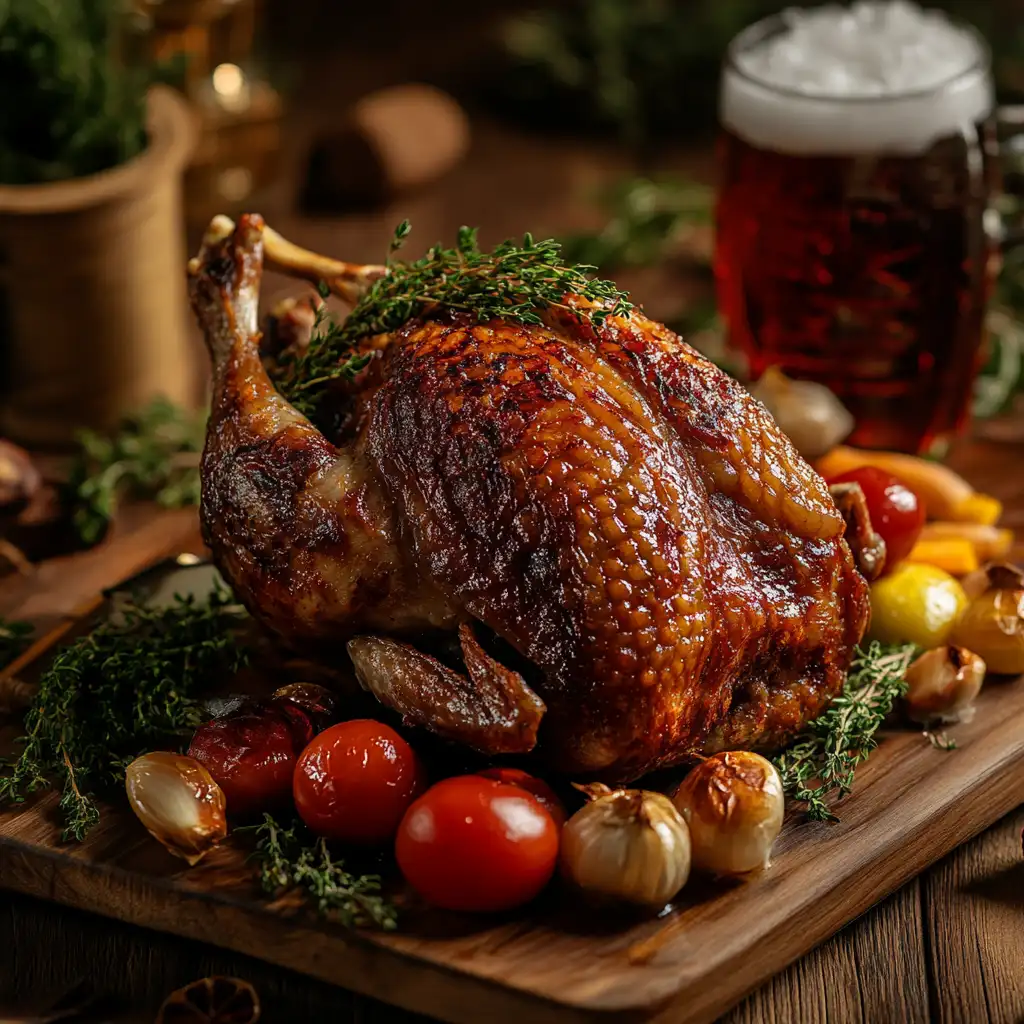Introduction
Drake meat, derived from male ducks, is a lesser-known yet flavorful type of poultry that is slowly gaining attention in the culinary world. Known for its distinct taste and rich texture, male duck meat is a delicacy in various cultures and cuisines. While duck meat as a whole is often celebrated, the unique properties of drake meat set it apart, offering a more robust flavor profile and a slightly firmer texture.
In many parts of the world, particularly in regions where duck farming is common, drake meat has been a staple ingredient in traditional recipes. It is highly prized for its versatility, able to adapt to a wide range of cooking techniques, from roasting to braising. Beyond its culinary appeal, drake meat is also valued for its nutritional benefits, which include high protein content and essential nutrients.
This article explores the nutritional value, health benefits, and culinary applications of male duck meat. We will also delve into sustainability, ethical considerations, and practical tips for selecting and storing this intriguing ingredient. Whether you’re a seasoned chef or a curious home cook, understanding drake meat’s potential can elevate your cooking and add variety to your meals.
Nutritional Value of Drake Meat
This type of poultry is not only a culinary delight but also a nutrient-dense food that offers a wealth of essential nutrients. Its unique composition makes it a favorable choice for those seeking a protein-rich and flavorful addition to their diet. Here’s a closer look at the nutritional profile of male duck meat.

Macronutrient Composition
Drake meat is an excellent source of high-quality protein, which is vital for muscle repair, growth, and overall body function. On average, a 100-gram serving of cooked drake meat provides approximately:
- Calories: 190–200 kcal
- Protein: 25–27 grams
- Fat: 8–10 grams
- Carbohydrates: Negligible
The protein content in male duck meat makes it an ideal choice for athletes, fitness enthusiasts, and individuals looking to maintain or build muscle mass. Its moderate fat content, primarily composed of healthy fats, also adds a satisfying richness to the meat.
Vitamins and Minerals
Drake meat is packed with essential vitamins and minerals that support various bodily functions. Key nutrients found in male duck meat include:
- B Vitamins: Rich in B12, niacin, and riboflavin, drake meat aids in energy production, red blood cell formation, and nervous system health.
- Iron: Helps in the production of hemoglobin and supports oxygen transportation in the blood.
- Zinc: Boosts immune function and promotes skin health.
- Phosphorus: Important for bone strength and cellular repair.
- Selenium: Acts as a powerful antioxidant, supporting thyroid function and immune defense.
Comparison with Other Poultry Meats
When compared to other types of poultry, such as chicken and turkey, drake meat stands out for its rich flavor and nutrient density:
- Protein: Comparable to turkey and chicken, with slightly higher protein content in certain cuts.
- Iron and Zinc: Higher levels than chicken, making it an excellent option for those with higher mineral needs.
- Fat Content: While male duck meat contains slightly more fat than chicken, much of it is unsaturated, contributing to heart health when consumed in moderation.
Unique Nutritional Characteristics
One of the standout features of drake meat is its omega-3 fatty acid content, which is typically higher than that found in other poultry. Omega-3s are known for their anti-inflammatory properties and their ability to support brain and heart health. Additionally, the darker meat of drake offers more myoglobin, a protein that enhances its iron content and adds to its depth of flavor.
Health Benefits of Drake Meat
Drake meat isn’t just a flavorful addition to your meals—it also offers an impressive range of health benefits. Packed with high-quality nutrients, it can play a vital role in promoting overall well-being. Below are the key health benefits associated with male duck meat.
High Protein Content for Muscle Growth
Protein is essential for the maintenance and repair of body tissues, and this flavorful protein is a rich source of this macronutrient. With around 25–27 grams of protein per 100 grams of cooked meat, drake meat is ideal for:
- Muscle Development: Supports the growth of lean muscle mass, making it a favorite among athletes and fitness enthusiasts.
- Recovery: Aids in faster recovery after exercise or injury due to its amino acid profile.
- Satiety: High protein levels help you feel full longer, which can support weight management efforts.
Rich in Omega-3 Fatty Acids
Tis type of poultry contains significant amounts of omega-3 fatty acids, which are essential for various aspects of health, including:
- Heart Health: Omega-3s reduce inflammation, lower blood pressure, and decrease the risk of heart disease.
- Brain Function: These healthy fats support cognitive function, memory, and mood stability.
- Joint Health: Omega-3s have anti-inflammatory effects that may help alleviate symptoms of arthritis.
Benefits for Bone Health
Drake meat is an excellent source of phosphorus, selenium, and B vitamins, all of which contribute to stronger, healthier bones. Regular consumption may:
- Strengthen Bones: Phosphorus works in tandem with calcium to maintain bone density.
- Prevent Deficiencies: Adequate B12 levels from meat prevent deficiencies that can lead to bone fragility.
- Support Repair: Selenium aids in reducing oxidative stress, which can otherwise damage bone cells.
Low Fat Content and Heart Health
While drake meat has a slightly higher fat content than chicken, much of the fat is unsaturated. This makes it a heart-healthy choice when consumed in moderation:
- Lower Cholesterol: Unsaturated fats can help lower LDL (“bad”) cholesterol while maintaining HDL (“good”) cholesterol.
- Manage Blood Pressure: Omega-3 fatty acids and minerals like potassium found in this meat contribute to healthy blood pressure levels.
Boosts Immune System
Drake meat’s zinc and selenium content enhance immune system performance by:
- Fighting Infections: Zinc helps activate immune cells to protect the body against pathogens.
- Neutralizing Free Radicals: Selenium works as an antioxidant to prevent cellular damage from oxidative stress.
Helps Combat Anemia
The high iron content in drake meat makes it an effective food for preventing or addressing iron-deficiency anemia. This is especially beneficial for:
- Women: During menstruation or pregnancy, when iron needs are elevated.
- Athletes: Who often require more iron due to higher energy demands.
Culinary Uses of Drake Meat
Drake meat, known for its deep flavor and tender texture, has been a staple in many traditional and modern cuisines around the world. Its versatility makes it a prized ingredient for chefs and home cooks alike. Whether roasted, grilled, braised, or even smoked, drake meat offers endless culinary possibilities.

Traditional Recipes
Drake meat features prominently in various traditional dishes across cultures. Some of the most notable examples include:
- Peking Duck (China): While often made with duck, drake meat can be used for its richer taste. This dish involves marinating the meat, air-drying the skin for crispiness, and roasting to perfection.
- Duck Confit (France): Drake meat is cured with salt and herbs, then slowly cooked in its own fat for a tender, flavorful dish.
- Crispy Aromatic Duck (East Asia): Seasoned with a blend of spices, steamed, and then deep-fried to achieve a crispy exterior while maintaining a juicy interior.
- Stews and Soups: Drake meat is a popular addition to hearty stews, such as those found in Eastern European or Southeast Asian cuisines.
Modern Cooking Techniques
As culinary creativity evolves, drake meat has found its place in contemporary kitchens. Modern techniques bring out its flavor while adding a twist to traditional preparations:
- Sous Vide: Slowly cooking the meat at a controlled temperature enhances tenderness and locks in juices.
- Smoking: Smoking drake meat adds a unique, smoky depth to its natural flavor, perfect for gourmet dishes.
- Grilling: Grilled drake meat, basted with honey or spice rubs, is a summer favorite.
- Fusion Dishes: Incorporating drake meat into tacos, bao buns, or sushi rolls showcases its adaptability.
Pairing with Sides and Sauces
Drake meat’s robust flavor pairs exceptionally well with various sides and sauces, enhancing the overall dining experience:
- Sides: Roasted vegetables, creamy mashed potatoes, wild rice, or polenta complement the meat’s rich profile.
- Sauces: Sweet sauces like plum, orange, or cherry glaze balance the savory taste. Spiced options, such as peppercorn or mustard sauce, add an extra kick.
- Seasonings: Herbs like thyme, rosemary, and sage work beautifully with drake meat.
Cultural Significance in Different Cuisines
Drake meat holds cultural importance in several regions, often associated with festive or ceremonial dishes:
- China and East Asia: This flavorful protein is a symbol of prosperity and is often served during celebrations like Lunar New Year.
- Europe: Countries like France and Hungary value duck and drake meat for their culinary traditions, especially in holiday dishes.
- Middle East: Spiced drake meat is used in rice-based dishes and stews, where its bold flavor complements the richness of the spices.
Cooking Tips for Optimal Flavor
To maximize the flavor and tenderness of this meat, consider the following tips:
- Marinate: Allow the meat to soak in a mixture of olive oil, herbs, and acidic ingredients like lemon juice to enhance tenderness and taste.
- Cook to Temperature: Use a meat thermometer to ensure it reaches the ideal internal temperature (around 165°F for cooked poultry).
- Rest the Meat: After cooking, let the meat rest for a few minutes to retain its juices before slicing.
Ethical Concerns in Drake Farming
Ethical considerations are a significant part of choosing the meat. Consumers and producers alike are increasingly mindful of:
- Animal Welfare: Practices such as overcrowding and limited access to natural behaviors can negatively affect the quality of life for ducks and drakes. Ethical farms prioritize space, clean environments, and humane treatment.
- Slaughter Practices: Ensuring humane slaughter methods is essential to reducing animal suffering. Certified farms follow strict guidelines for ethical slaughter.
- Byproducts: male duck meat production often utilizes feathers, fat, and other byproducts, minimizing waste and increasing the overall sustainability of the process.
Choosing Ethical and Sustainable Options

Consumers who prioritize sustainability and ethical practices can take the following steps when purchasing meat:
- Look for Certifications: Labels like “free-range,” “organic,” and “certified humane” indicate higher welfare and environmental standards.
- Buy Local: Supporting local farmers reduces the carbon footprint associated with transportation and promotes community-based farming practices.
- Ask Questions: Inquire about farming practices and sourcing methods at your local butcher or market to ensure alignment with your values.
- Support Sustainable Brands: Seek out companies and producers committed to ethical and eco-friendly farming practices.
Alternatives to Drake Meat
For those concerned about the ethical and environmental implications of animal farming, there are alternatives:
- Plant-Based Substitutes: Products made from jackfruit, seitan, or soy are designed to mimic the texture and flavor of poultry.
- Cultured Meat: Lab-grown meat offers a promising future with the potential to provide animal protein without traditional farming.
- Game Meat: Ethically sourced wild game, such as venison or rabbit, can serve as alternatives to farmed drake meat.

